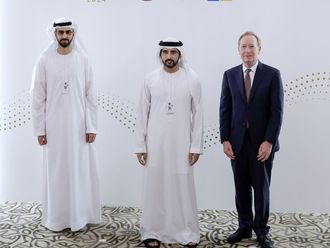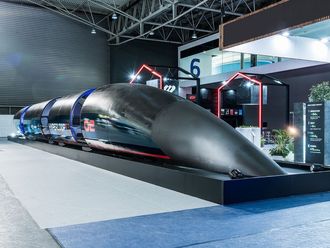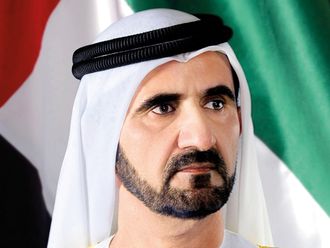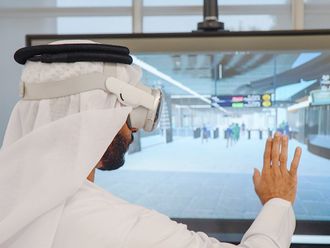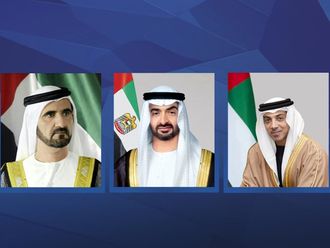Dubai, which has emerged in the past decade as the Gulf's leading economic and trading hub, holds the top position worldwide for population and employment growth, at 5.8 per cent and 8.3 per cent per annum respectively, according to a report by global property consultants Jones Lang LaSalle.
Much of its success derives from its effort to create a favour-able environment for business, and in providing the physical infrastructure to match.
"Dubai has been actively promoted on the international arena, and the city has been successful in attracting foreign companies. It has grown rapidly as a tourist destination, and is a developing a high-tech image as an Internet hub city," said the report.
However, the building boom of recent years has translated into an oversupply of office space.
Sharing its success, Dublin, known as the Celtic Tiger, consistently scored well on five measures: strong employment growth (4.1 per cent per annum) and, by European standards, strong population growth (0.7 per cent per annum).
This, said the report, is translated into into a dynamic office market, characterised by high levels of take-up and high construction activity. The occupied office stock doubled in a decade.
Dublin recorded the strongest real rental growth at 61 per cent per annum of the 100 cities analysed (Figure 2). The city's growth owes much to the success of the Irish national economy in creating one of Europe's most favourable business environments.
While external subsidy has been a factor, the economy's success has been built on private investment, explained the report.
Dublin has captured a significant proportion of Ireland's foreign direct investment (FDI), attracted by a favourable tax regime, low regulation, labour market flexibility and access to a well-educated labour force. IT software and financial services have been particularly active.
Dublin is now Europe's largest centre for the software industry, with five of the world's leading top ten software companies have their European centre in Dublin.
Las Vegas, meanwhile, has been the fastest growing U.S. metropolitan area, and stands "head and shoulders" above the other North American cities in terms of population growth, employment growth, office net absorption and office construction rates. noted the report.
The city's population has been growing by over 70,000 a year, and Las Vegas is now a city of 1.6 million people. Growth has been underpinned by a rapidly expanding leisure sector, but as the city has grown its economy has diversified, and low taxes and low regulation have attracted new companies and labour.
But why the have these cities been winners?
These cities, stressed Jones Lang LaSalle, have created a compelling cocktail of attractions that has stimulated strong economic growth, and all three share a number of common features:
* Size - with metropolitan area populations of 1.6 million in Las Vegas, 1.1 million in Dublin and 0.9 million in Dubai.
* Attractive business environments, light regulation and favourable tax regimes for business, which has led to high levels of inward investment.
* Strong immigration and a successful record of attracting skilled and educated labour.
* Leisure - both Las Vegas and Dubai are underpinned by leisure activities, while Dublin has emerged as an important Euro-pean short-stay tourist destination.
* Branding - All three cities have developed a high profile on the international stage.
With the second part of the report focusing on technological richness, the group said in the first part that the ability to innovate will play a key role in the continued development of technology-rich cities, and the world's existing technology clusters have a good head start.
A number of cities in developing and transition economies have strong innovation bases. Moscow, Beijing and even Tehran all have well-educated populations, high levels of R&D expenditure, and large number of researchers and science graduates, which combined with the appropriate communications infrastructure and business environment could potentially propel them to economic lift-off.
Those cities will use technology to leapfrog the conventional requirements of physical transport and communications infrastructure. Where the major IT multinationals place their manufacturing and R&D facilities can often provide the catalyst for technology-led growth.
Cities in some developing economies have a competitive advantage in this respect. India, for example, has developed a degree of originality in the fields of technology and intellectual research, and at the same time has an abundance of low-cost skilled IT-trained manpower.
As a result, cities such as Mumbai, New Delhi, Bangalore (the Silicon Valley of India), Hyderabad and Chennai have been successful in recent years in attracting IT and contact centre activities.
Jones lang LaSalle's report covered 40 cities in the Americas, 37 cities in the EMEA region and 23 cities in the Asia-Pacific.
Annual data was analysed for the ten-year period, 1991 to 2001, for 5 measures of city growth and real estate activity:
* Two measures of city growth:
* Population change (per cent a year)
* Employment change (per cent a year)
* Two measures of real estate activity:
* Office net absorption rate (as per cent stock a year)
• Office construction rate (as per cent stock a year)
* One measure of real estate performance:
• Prime office rental change (real, per cent a year)
This historic data was analysed to build up a picture of city performance over the past ten years.
Our aim was to identify those cities that have created the right circumstances to stimulate strong city economic growth, high levels of real estate activity and strong real estate performance.
A favourable environment for business
Dubai, which has emerged in the past decade as the Gulf's leading economic and trading hub, holds the top position worldwide for population and employment growth, at 5.8 per cent and 8.3 per cent per annum respectively, according to a report by global property consultants Jones Lang LaSalle.






